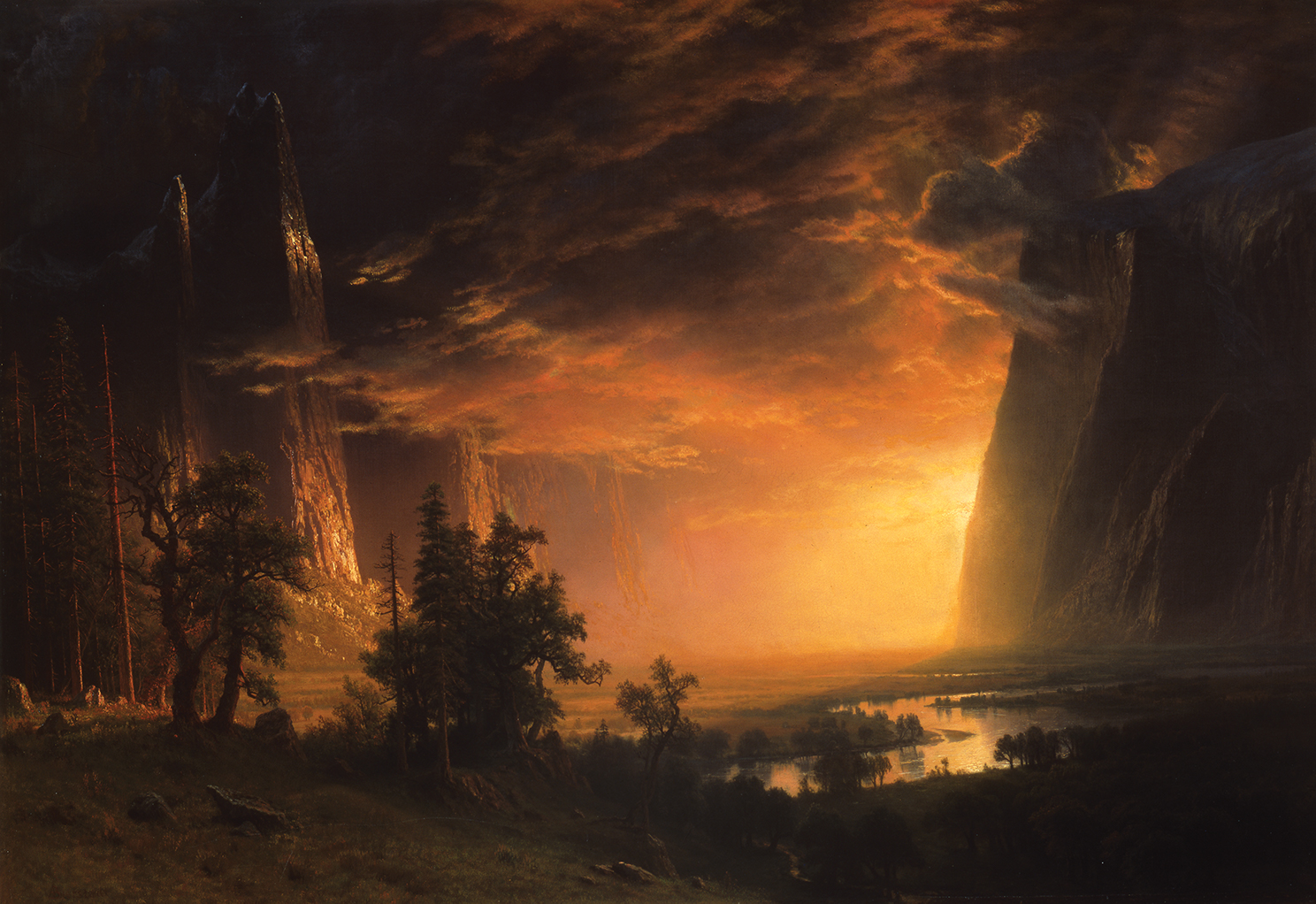The inscription on this painting indicates it was executed during Bierstadt’s stay in Europe from 1867 to 1869. Possibly it was painted in his Rome studio, where a visitor reported seeing at least one Yosemite scene.
Bierstadt painted Yosemite Valley in many different moods by altering the effects of light. None is more melodramatic than this view looking west. It rivals Turner with blazing yellows and reds of the sunset that obliterates distances and tinges the lowering clouds. The brilliance of the background is intensified by pools of deep shadow, whose darkness is penetrated here and there by the sun’s rays that light up the winding river, trees, grass, and sprinkling of snow in the high pinnacles. Certainly, such a painting can be seen as an example of the nineteenth-century idea of landscape as a revelation of the Divine. This does not preclude the possibility that the work is based on actual observation, not just of Yosemite but of the spectacular sunset itself; on one occasion the art critic Henry T. Tuckerman, who was visiting Bierstadt at his home on the Hudson, saw the artist make a rapid sketch of an astonishing sunset. Bierstadt’s emphatic presentation of Yosemite is also a poignant statement of the sublime beauty of the American landscape. Whatever the artist’s intention, Sunset in the Yosemite Valley, even more than his other paintings, seems to fit the various nineteenth-century philosophical theories about landscape as something more than a portrait of the land.
This painting also reinforces the standard idea of Beirstadt as a painter of minute detailing the Düsseldorf and Hudson River School traditions. While details are indicated by fine brushwork, impasto strokes imitate rugged granite cliffs on the left.


